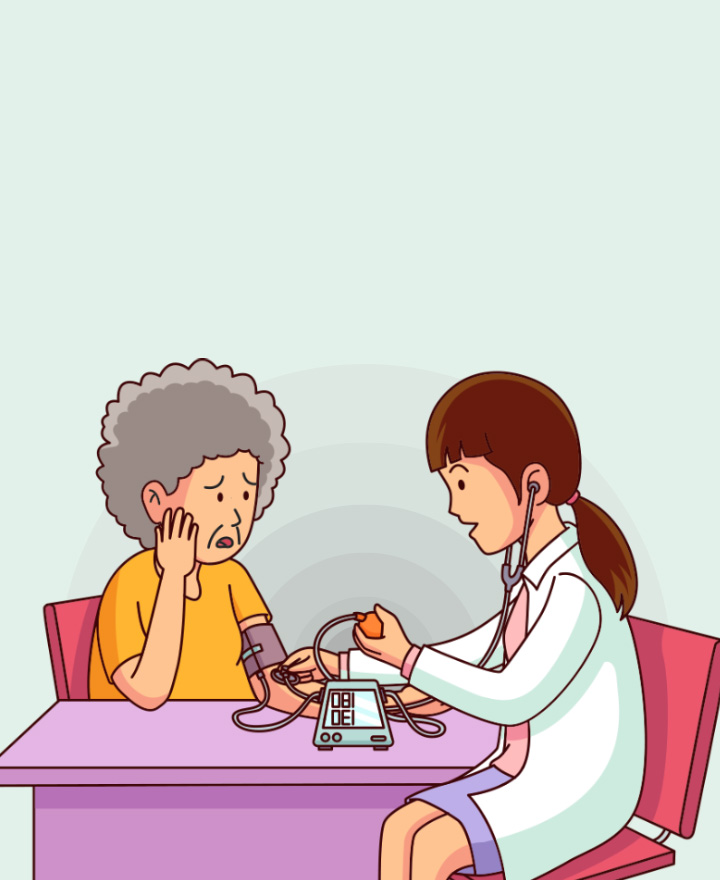

The Different Stages of Varicose Veins
Varicose veins are enlarged, purple, twisted veins which occur when you are suffering from CVI or Chronic Venous Insufficiency. They are primarily seen on legs but they can appear on any part of your body. These conditions are not considered serious health concerns, but they could lead to severe complications if they become severe. The primary causes of varicose veins include standing for a longer time than usual, obesity or being overweight, and an inactive lifestyle. As varicose veins are easily visible, patients suffering from this condition may feel embarrassed or uncomfortable. There are different phases of varicose veins. Let’s explore the various stages of this health condition in detail.
Stages of Varicose veins
First Stage — Chronic Venous Insufficiency (CVI):
• CVI marks the initial stage of varicose veins, triggered by malfunctioning valves in the veins.
• Valves failing to close properly result in venous reflux, causing blood to pool in extremities.
• Symptoms include heaviness, cramping, red spots, skin sheen, and occasional swelling after prolonged sitting or standing.
• Detecting faulty valves through venous ultrasound at this stage allows for early intervention before visible varicose veins appear.
Second Stage — Formation of Enlarged Veins:
• Continuous pooling and stretching of blood leads to development of varicose veins.
• Varicose veins are large, twisted, dark blue vessels protruding above the skin, often accompanied by spider veins.
• Seeking treatment at this stage is common for those aiming to eliminate unsightly veins.
Third Stage — Increasing Discomfort
• Discomfort may escalate as varicose veins progress, with symptoms like burning, itchiness, and aching during the day, progressing to night-time pain.
• Compression socks, elevation, and anti-inflammatory medication may provide temporary relief, but long-term solutions require proper treatment.
Fourth Stage — Oedema (Swelling):
• Prolonged CVI can result in swelling, particularly in the legs, due to overflowing veins and fluid accumulation.
• If left untreated, varicose veins may lead to oedema, i.e., chronic swelling affecting tissues surrounding the varicose vein.
Fifth Stage — Skin Changes:
• Reduced oxygen and nutrient delivery to the skin results in noticeable changes.
• Symptoms include redness, inflammation, hyperpigmentation, and a tough, leathery texture.
• Skin becomes more susceptible to breakage and infection due to compromised strength and health.
Sixth Stage — Ulceration (Venous Ulcer):
• Venous ulceration represents an advanced stage of varicose veins, characterised by slow-healing open sores.
• Venous ulcers are challenging to treat, have a high recurrence rate, and signify the severe progression of the venous disorder.
Conclusion
Varicose veins can be treated with care. As soon as you notice any sign of varicose veins, consult your doctor immediately to diagnose the stage and treatment.
One of the important components of our overall wellness is also being financially secured. Healthcare emergencies can happen any time, but a good health insurance policy can protect you from such uncertain situations. To know more about Wellness and other health related tips, visit the wellness corner.
Source: theveininstitute.com.au, hopkinsmedicine.org
Disclaimer: This blog provides general information and discussions about health and related subjects. The information and other content provided in this blog, website or in any linked materials are not intended and should not be considered, or used as a substitute for, medical advice, diagnosis or treatment. Kindly contact your Doctor before starting a new medicine or health regime.
Related Articles
Symptoms and Causes of Varicose Veins
Natural Remedies for Varicose Veins
Leech Therapy for Varicose Veins
Ayurvedic Treatment For Varicose Veins: Does It Work?
A Guide to Understanding Arthritis and Its Different Types
Published on February 19, 2024














 Health Insurance
Health Insurance  Travel Insurance
Travel Insurance  Car Insurance
Car Insurance  Cyber Insurance
Cyber Insurance  Critical Illness Insurance
Critical Illness Insurance
 Pet Insurance
Pet Insurance
 Bike/Two Wheeler Insurance
Bike/Two Wheeler Insurance  Home Insurance
Home Insurance  Third Party Vehicle Ins.
Third Party Vehicle Ins.  Tractor Insurance
Tractor Insurance  Goods Carrying Vehicle Ins.
Goods Carrying Vehicle Ins.  Passenger Carrying Vehicle Ins.
Passenger Carrying Vehicle Ins.  Compulsory Personal Accident Insurance
Compulsory Personal Accident Insurance  Travel Insurance
Travel Insurance  Rural
Rural